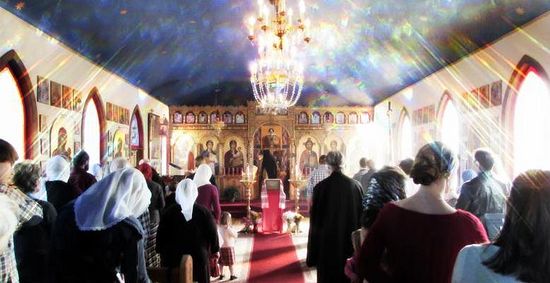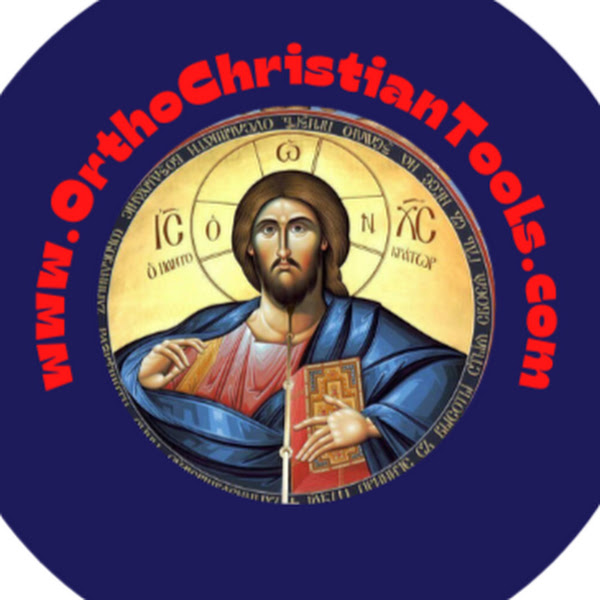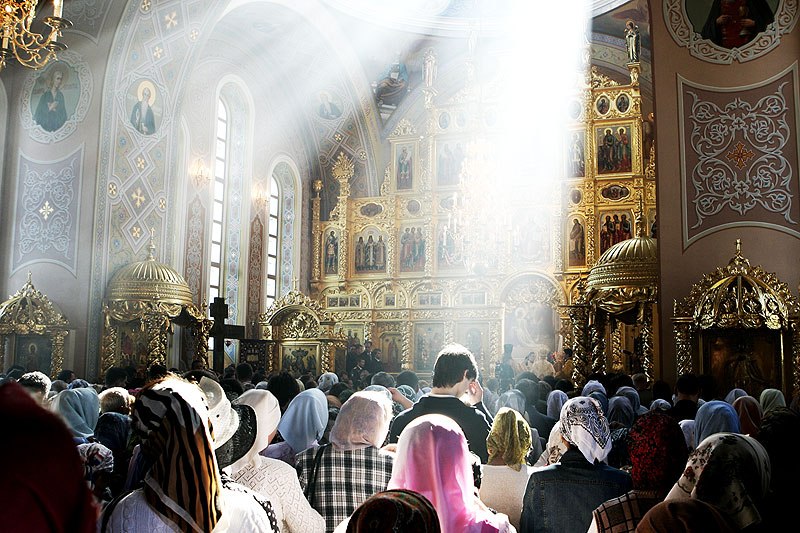Have you ever walked into an Orthodox church and wondered why everyone is standing? You may have searched for a pew to sit in—only to find a few chairs scattered along the back wall, often occupied by elderly parishioners or new mothers. That’s no accident. In Orthodox Christianity, standing during worship isn’t just tradition—it’s theology in motion.
Let’s explore why Orthodox Christians stand during church services, when it’s appropriate to sit, and how posture plays a vital role in the spiritual life of the faithful.
Standing: The Ancient Posture of Christian Worship
Standing in worship isn’t a modern idea—it’s ancient. For nearly sixteen centuries, Christians stood during services. This posture wasn’t just a cultural preference; it reflected the reverence, attentiveness, and humility that the early Church believed appropriate in the presence of God.
In fact, if you visit Orthodox countries like Greece, Serbia, Russia, or Lebanon, you’ll find that most traditional churches don’t have pews at all. Worshippers stand from beginning to end, just as Christians did in the earliest centuries after Christ.
The Bible affirms this practice. In passages such as Isaiah 6:2, Daniel 7:10, and Nehemiah 9:4-5, we see angels and faithful people standing before the Lord in awe and service. Tertullian, one of the early Church Fathers, put it plainly:
“It is especially improper to pray while sitting at the very time that a multitude of angels stand before the face of the Lord in fear and trepidation.”
To stand is to serve. Orthodox Christians stand because worship is not about being comfortable—it’s about being present, alert, and humble before God.
But Is It Ever Okay to Sit?
Yes, it is—with discernment and humility.
The Church understands that not every body is able to stand for long periods. Sitting may be necessary for the elderly, the infirm, pregnant or nursing mothers, or those recovering from illness. God, after all, does not demand suffering, but sincerity.
That said, if you’re able, you should stand as much as possible, especially during the following key moments of the Divine Liturgy:
The opening blessing by the priest
The Little and Great Entrances
The Gospel reading
The Anaphora (Eucharistic Prayer)
The censing of the congregation
The distribution of Holy Communion
The final blessing and Dismissal
In many parishes, you’ll find service books or printed bulletins with suggested times for standing or sitting. When a bishop (hierarch) is present, simply follow his lead. If you’re unsure, follow this simple rule:
When in doubt—stand. You’ll never go wrong.

Kneeling in Orthodox Churches: Rare, Reverent, and Regulated
If you come from a Roman Catholic background, you may be used to kneeling regularly during services, often with the aid of pew-mounted kneelers. In Orthodox Christianity, however, kneeling is much less common—and highly regulated by liturgical tradition.
Orthodox Christians kneel primarily during penitential services, such as during the Consecration of the Holy Gifts in the Presanctified Liturgies of Great Lent. These are times of deep repentance and spiritual preparation, and kneeling reflects that inner humility.
However, during Pascha (Easter) and every Sunday—which the Church considers a “little Pascha”—kneeling and prostrations are expressly forbidden. These are joyous celebrations of the Resurrection of Christ, and so we stand in victory and thanksgiving, not in sorrow or penitence. Kneeling, associated with grief and contrition, would be out of place.
That said, there is one major exception: the Day of the Holy Trinity, also known as Pentecost Sunday. At the conclusion of the Divine Liturgy, a special service called the Kneeling Vespers is celebrated. During this service, the priest kneels and reads powerful prayers of supplication and renewal, and the faithful kneel with him. This is the first time kneeling is reintroduced after the Paschal season, marking a spiritual shift from joy alone to the return of humble petition and repentance.
In short, kneeling in the Orthodox Church is not a routine gesture—it is a sacred act reserved for sacred moments. It reminds us that worship involves both joy and repentance, and each has its proper time.

Posture in Worship: A Physical Expression of Faith
Orthodox worship is not passive. It’s participatory and full-body prayer. That’s why Orthodox Christians don’t just stand—we bow, make the sign of the cross, perform metanias, and even prostrate. Let’s look at each of these:
🔹 Bows: A Sign of Reverence
Bowing in church is common and varied:
A reverential bow: A gentle incline of the head or upper body
A deep bow: About 45 degrees from the waist, often paired with the sign of the cross
We bow:
When entering or leaving the church
Before icons or during personal prayer
When the priest blesses or censes the people
Before receiving Holy Communion
Bowing is a way of saying, “I honor You, Lord,” with our bodies as well as our words.
🔹 Metanias: A Gesture of Repentance
Metania comes from the Greek word metanoia—“a change of heart.”
A metania is a small, reverent bow combined with the sign of the cross and touching the floor with the fingertips. It’s often used:
When asking forgiveness
During Akathist services
When venerating icons
As a substitute for full prostrations when physical health prevents them
🔹 Prostrations: Full-Bodied Worship and Humility
A prostration (or proskynesis) is a full-body bow. The faithful drop to their knees, touch their forehead to the floor, and remain there briefly in prayer—often reciting the Jesus Prayer. This action symbolizes total submission to God, repentance, and humility.
Prostrations are typically reserved for:
Lenten services
Private prayers of repentance
Certain moments in weekday liturgies
As with kneeling, we do not make prostrations on Sundays or during Paschal season.
Orthodox Worship: Heaven on Earth
Orthodox worship is not a passive event. It’s not a concert, a lecture, or a time to relax and observe. It’s a divine encounter, a communal offering, a symphony of prayer, movement, and reverence. The very word “liturgy” means the work of the people—and this work involves every part of us: body, mind, and soul.
Look around during the Divine Liturgy:
The faithful bow and cross themselves
Some kneel or prostrate in repentance
Priests cense the icons and people
The choir chants ancient hymns
Children light candles and venerate icons
And the whole congregation stands before God in awe
This is the beauty of Orthodox Christian worship: it immerses us in Heaven on Earth.
Final Thoughts: Worship with Your Whole Self
If you’re new to Orthodox Christianity, standing during the service might feel unusual or even uncomfortable at first. But over time, you’ll discover that using your body in prayer deepens your experience of God’s presence.
Whether you’re bowing, making the sign of the cross, or standing quietly in reverence, your posture becomes prayer.
So the next time you enter an Orthodox church, don’t look for a pew—look up, stand tall, and offer yourself to God with awe, humility, and love.

